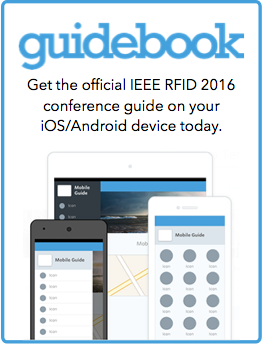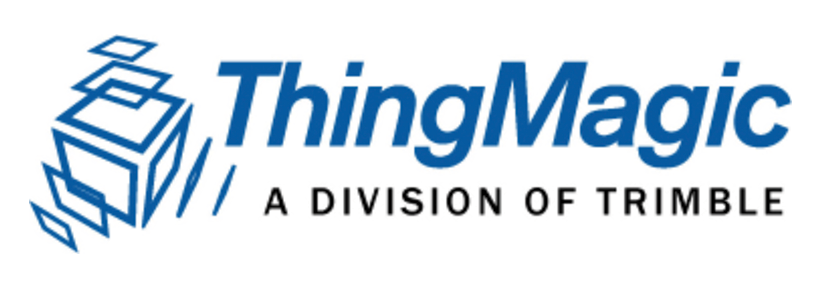Hot Topics in RFID – Invited Speakers
IEEE RFID 2016 has curated four stimulating talks on current trends in RFID and IoT. Join the discussion after the opening plenary! In this rousing segment, we explore the future directions that RFID technology will take.
First, the future of ultra-wideband localization is hashed out for cheap, low-energy tags. How much accuracy and precision do we require in this application? Can cheap tags support such wide bandwidths? In the second talk, we discuss the unique needs of indoor positioning and where the roadmap of upcoming communications technologies leads us. Third, a new network management technique helps decode noisy sensor messages and reduce missed reads of tags. Lastly, we discuss the challenges of providing ever increasing computing power in ever decreasing package sizes.
Invited Talks
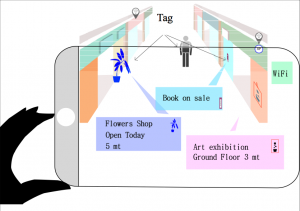 “The Future of Ultra-Wideband Localization in RFID” – Davide Dardari, Nicolò Decarli, Anna Guerra, and Francesco Guidi
“The Future of Ultra-Wideband Localization in RFID” – Davide Dardari, Nicolò Decarli, Anna Guerra, and Francesco Guidi
In the new scenarios foreseen by the Internet of Things (IoT), industrial and consumer systems will be required to detect and localize tagged items with high accuracy using cheap, energy autonomous, and disposable tags. In this context, the paper provides a survey on recent developments in the field of passive ultra-wideband (UWB) radio-frequency identification (RFID) by discussing the main advantages and open issues in providing high positioning accuracy with energy autonomous devices. The potential cutting-edge technologies for next generation UWB-RFID as a key enabler for the IoT are also envisioned.
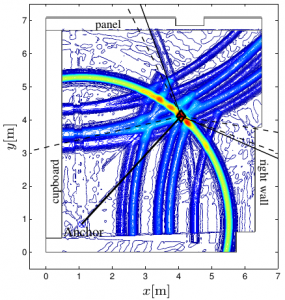 “High-accuracy Positioning for Indoor Applications: RFID, UWB, 5G, and beyond” – Klaus Witrisal, Stefan Hinteregger, Josef Kulmer, Erik Leitinger, and Paul Meissner
“High-accuracy Positioning for Indoor Applications: RFID, UWB, 5G, and beyond” – Klaus Witrisal, Stefan Hinteregger, Josef Kulmer, Erik Leitinger, and Paul Meissner
The paper envisions highly accurate and reliable indoor positioning – at accuracy levels in the 10 cm range – which will enable a large number of innovative location-based applications. Such accuracy levels essentially allow for a useful real-time interaction of humans and cyber-physical systems yielding services such as activity recognition, navigation at “shelf” level, geofencing, process monitoring, and process control. The paper reviews the difficulties faced by indoor positioning systems and the potential capabilities of upcoming generations of wireless systems that will increasingly make high-accuracy positioning available in near future. It also speculates about new approaches towards accurate positioning of RFID tags.
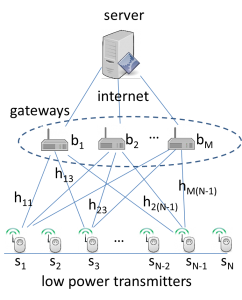 “Reliable Sensor Communications with On Demand Network MIMO” – Mary Ann Weitnauer, Qiongjie Lin, Huanyu Zhang†, Hongxian Tian, Sean Nowlan, Gedeon Nyengele, Sajith Mohan Chakkedath, and Jim Stratigos
“Reliable Sensor Communications with On Demand Network MIMO” – Mary Ann Weitnauer, Qiongjie Lin, Huanyu Zhang†, Hongxian Tian, Sean Nowlan, Gedeon Nyengele, Sajith Mohan Chakkedath, and Jim Stratigos
On Demand Network MIMO is proposed for the uplink in one-hop wireless networks with low power transmitters, such as RFID tags and transmit-only sensors, and multiple gateway nodes. The On Demand feature is that the gateway nodes attempt to decode all packets, but only for the packets not decoded by the gateways, the server requests that the multiple gateways forward digitized samples of the waveforms of those missed packets, for MIMO processing at the server. Simulation and experimental results show how longer range, higher packet delivery ratios, and moderate fronthaul loads are achieved with this selective application of network MIMO.
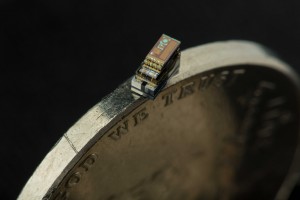 “Millimeter Scale Computing Platform for Next Generation of Internet of Things” – Taekwang Jang, Myungjoon Choi, Dennis Sylvester, and David Blaauw
“Millimeter Scale Computing Platform for Next Generation of Internet of Things” – Taekwang Jang, Myungjoon Choi, Dennis Sylvester, and David Blaauw
The internet of things has enabled the communication of smart physical objects and improved the quality of machine service to humans. This trend will continue with the next class of computing platforms enabled by millimeter-scale sensors, diversifying the signal sources. This paper addresses ultra-low power circuit techniques to overcome the major challenges to develop a millimeter-scale IoT.
About the Speakers
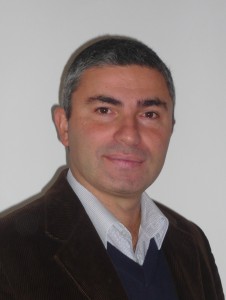 Davide Dardari is an Associate Professor at the University of Bologna, Italy. Since 2005, he has been a Research Affiliate at Massachusetts Institute of Technology (MIT). His interests are on wireless communications, localization techniques and distributed signal processing. He received the IEEE Aerospace and Electronic Systems Society’s M. Barry Carlton Award (2011) and the IEEE Communications Society Fred W. Ellersick Prize (2012). He is Senior Member of the IEEE where he was the Chair for the Radio Communications Committee of the IEEE Communication Society. He served as an Editor for IEEE Transactions on Wireless Communications from 2006 to 2012.
Davide Dardari is an Associate Professor at the University of Bologna, Italy. Since 2005, he has been a Research Affiliate at Massachusetts Institute of Technology (MIT). His interests are on wireless communications, localization techniques and distributed signal processing. He received the IEEE Aerospace and Electronic Systems Society’s M. Barry Carlton Award (2011) and the IEEE Communications Society Fred W. Ellersick Prize (2012). He is Senior Member of the IEEE where he was the Chair for the Radio Communications Committee of the IEEE Communication Society. He served as an Editor for IEEE Transactions on Wireless Communications from 2006 to 2012.
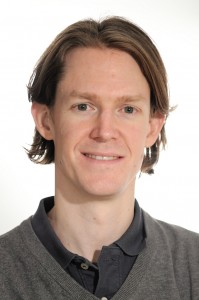 Klaus Witrisal received the Ph.D. degree from Delft University of Technology, Delft, The Netherlands, in 2002 and the Habilitation from Graz University of Technology, Austria, in 2009. He is currently an Associate Professor at the Signal Processing and Speech Communication Laboratory (SPSC) Professor at Graz University of Technology where he is leading the wireless communications group focusing on physical layer signal processing techniques, propagation channel modeling, and (indoor) positioning.
Klaus Witrisal received the Ph.D. degree from Delft University of Technology, Delft, The Netherlands, in 2002 and the Habilitation from Graz University of Technology, Austria, in 2009. He is currently an Associate Professor at the Signal Processing and Speech Communication Laboratory (SPSC) Professor at Graz University of Technology where he is leading the wireless communications group focusing on physical layer signal processing techniques, propagation channel modeling, and (indoor) positioning.
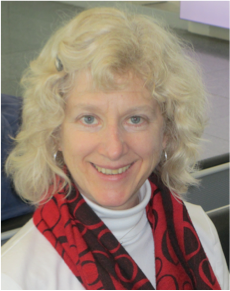 Dr. Mary Ann Weitnauer (formerly Mary Ann Ingram) has been a professor for 27 years in the School of Electrical and Computer Engineering at Georgia Tech. Her research focuses on the application of real and virtual antenna arrays to Layers 1 through 3 of wireless multi-hop, ad hoc, mesh, WLAN, RFID, and sensor networks. Dr. Weitnauer directs the Smart Antenna Research Laboratory (SARL).
Dr. Mary Ann Weitnauer (formerly Mary Ann Ingram) has been a professor for 27 years in the School of Electrical and Computer Engineering at Georgia Tech. Her research focuses on the application of real and virtual antenna arrays to Layers 1 through 3 of wireless multi-hop, ad hoc, mesh, WLAN, RFID, and sensor networks. Dr. Weitnauer directs the Smart Antenna Research Laboratory (SARL).
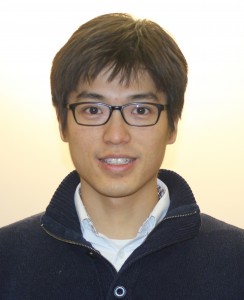 Taekwang Jang received the B.S. and M.S. degrees in electrical engineering from KAIST, Korea, in 2006 and 2008, respectively. In 2008, he joined Samsung Electronics Company Ltd., Giheung, Korea, where he worked on mixed signal circuit design including analog and all-digital phase-locked loops for communication systems and mobile processors fabricated in 20 to 45nm CMOS process. Since 2013, he has been working toward the Ph.D. degree in University of Michigan under Prof. David Blaauw.
Taekwang Jang received the B.S. and M.S. degrees in electrical engineering from KAIST, Korea, in 2006 and 2008, respectively. In 2008, he joined Samsung Electronics Company Ltd., Giheung, Korea, where he worked on mixed signal circuit design including analog and all-digital phase-locked loops for communication systems and mobile processors fabricated in 20 to 45nm CMOS process. Since 2013, he has been working toward the Ph.D. degree in University of Michigan under Prof. David Blaauw.
Now is the time to register before the conference! Network with top researchers in RFID, wireless sensors, and IoT at IEEE RFID 2016.



